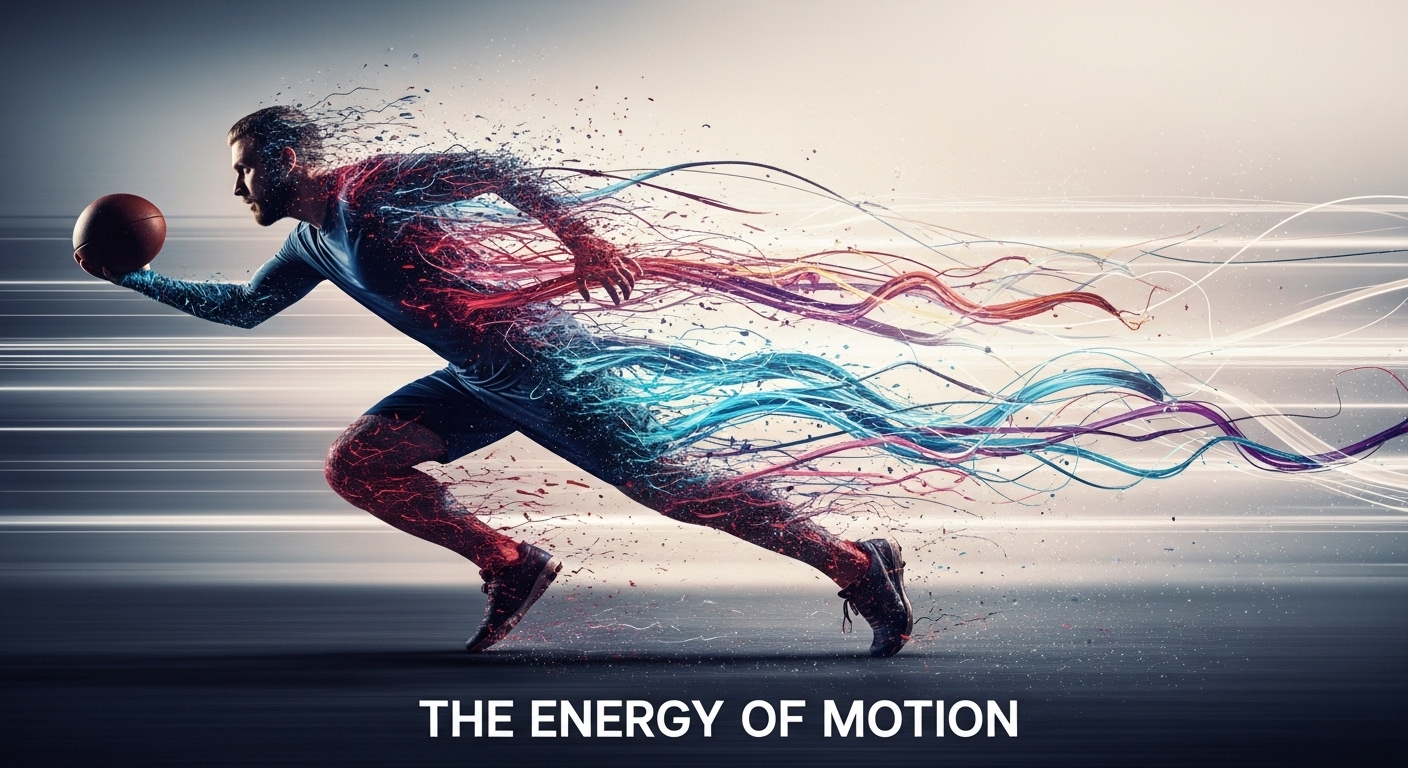Sports have been an integral part of human civilization for centuries, evolving from simple recreational activities to complex and highly organized events that command the attention of billions. From the thrill of the game to the profound cultural, social, and economic impact, sports hold a special place in our lives. Whether it’s the global stage of the World Cup or a casual local soccer match in a park, sports create connections, bring joy, and inspire people to push the limits of their abilities. This blog post delves into the significance of sports in modern society, exploring their evolution, influence on culture, health benefits, economic impact, and their role in fostering community.
The Evolution of Sports
Sports, as we know them today, have evolved significantly over time. The earliest forms of sport can be traced back to ancient civilizations where physical contests were often used to demonstrate strength, agility, and honor. In ancient Greece, for example, the Olympic Games were established in 776 BCE as a way to honor the gods. These games were not just about athletic performance but were also a means of fostering unity among the Greek city-states. The ancient Greeks believed in the concept of “kalokagathia,” a harmonious balance of physical and intellectual excellence, which they sought to achieve through sports.
During the Roman Empire, gladiatorial contests and chariot races became some of the most popular forms of entertainment, while in medieval Europe, sports like jousting and archery were reserved for the nobility. However, it wasn’t until the Industrial Revolution in the 18th and 19th centuries that sports began to evolve into the modern, organized form that we recognize today. The rise of cities, mass transportation, and communication technologies allowed people to participate in and watch sports on a scale never seen before. The formation of professional leagues, such as Major League Baseball in the United States in 1903 and the first official FIFA World Cup in 1930, helped shape the global sports landscape.
By the 20th century, sports had become a major part of the entertainment industry, attracting audiences not only in their local communities but across the globe. Television broadcasts and, later, the internet made it possible for fans to watch games in real-time from anywhere in the world, further cementing the global appeal of sports.
Sports as a Unifying Force
One of the most powerful aspects of sports is their ability to unite people. In a world that is often divided by race, culture, religion, and politics, sports offer a unique platform for creating shared experiences. Whether it’s rooting for a local team or celebrating a national victory on the world stage, sports foster a sense of community and belonging. Fans from all walks of life come together to support their teams, transcending social barriers and forming emotional connections with athletes and fellow supporters alike.
International events like the FIFA World Cup, the Summer Olympics, and the Rugby World Cup are prime examples of how sports can bring nations together. These events provide an opportunity for countries to showcase their culture, celebrate their athletes’ achievements, and compete on a global stage. They also create an environment of friendly rivalry, where countries from different continents can engage in competition while fostering respect and mutual understanding.
Beyond national pride, sports also help bridge social and economic divides. In many communities, sports offer a way for individuals from disadvantaged backgrounds to escape poverty and gain access to opportunities they might not otherwise have. The success stories of athletes like Michael Jordan, Serena Williams, and Pelé highlight how sports can be a vehicle for social mobility and transformation. These athletes have become global icons not only because of their exceptional talent but also because they represent the idea that success in sports can overcome even the most challenging circumstances.
The Psychological and Health Benefits of Sports
While the social and cultural impacts of sports are widely recognized, their psychological and physical benefits are equally significant. Engaging in sports, whether at a competitive or recreational level, has a positive effect on both mental and physical health.
On the physical side, regular participation in sports helps to improve cardiovascular health, build muscle strength, and increase flexibility and coordination. Physical activity is essential for preventing chronic diseases such as obesity, diabetes, and heart disease. In fact, studies show that people who engage in regular physical activity are less likely to develop serious health conditions, and they tend to live longer, healthier lives.
However, the benefits of sports are not confined to the body alone. Sports also have a profound impact on mental health. Engaging in physical activity has been shown to reduce symptoms of depression and anxiety by releasing endorphins—chemicals in the brain that promote feelings of well-being. Exercise can also improve cognitive function, boost self-esteem, and enhance mood, which is why many mental health professionals recommend physical activity as part of treatment for individuals struggling with depression, stress, and anxiety.
For children and adolescents, sports offer valuable life skills that extend far beyond the field or court. Team sports, in particular, teach important lessons about teamwork, discipline, leadership, and time management. Young athletes learn how to set goals, work toward achieving them, and cope with setbacks and failure—skills that are transferable to many other areas of life. Additionally, sports offer a sense of belonging and community, providing a positive outlet for energy and reducing the likelihood of involvement in harmful activities.
The Economic Impact of Sports
Sports are not only a source of entertainment and personal well-being; they also have a profound economic impact on local and global economies. The sports industry is a multi-billion-dollar sector, encompassing everything from ticket sales and broadcasting rights to sponsorship deals, merchandise, and advertising. Professional sports leagues like the National Football League (NFL), the English Premier League (EPL), and the National Basketball Association (NBA) generate significant revenue, making sports one of the most profitable industries in the world.
One of the main economic contributions of sports is job creation. The sports sector provides employment for millions of people, including athletes, coaches, team staff, event organizers, broadcasters, and many others involved in the production and distribution of sports-related content. Major sports events, such as the Olympic Games and the FIFA World Cup, stimulate economic activity in host cities by creating thousands of temporary jobs in hospitality, transportation, and infrastructure development.
In addition to creating jobs, sports also contribute to economic growth through tourism. Major events attract visitors from around the world, who spend money on tickets, accommodations, food, and souvenirs. Hosting international sporting events can provide a significant boost to the local economy, with cities often seeing long-term benefits from the infrastructure improvements made to accommodate the event.
However, the financial side of sports is not without its challenges. The cost of hosting large-scale events can be astronomical, and some cities struggle to recover the investments made in building stadiums and infrastructure. There is also the growing concern over the increasing commercialization of sports, where the financial interests of media companies, sponsors, and advertisers sometimes overshadow the integrity of the sport itself. This shift has led to debates about the balance between profit-making and maintaining the purity of sports as a form of competition and entertainment.
The Influence of Technology on Sports
In recent years, technology has had a transformative impact on the world of sports. Advances in sports science, data analytics, and broadcasting technologies have revolutionized the way athletes train, perform, and recover. For example, sports teams and coaches now use sophisticated data analysis tools to track player performance, identify weaknesses, and optimize training regimens. Wearable technology, such as fitness trackers and heart rate monitors, provides real-time data that helps athletes and trainers make informed decisions about their health and performance.
Moreover, technology has transformed how fans engage with sports. The advent of high-definition television, online streaming services, and social media platforms has made it easier for fans to access sports content and interact with athletes and fellow supporters. Social media platforms like Twitter, Instagram, and Facebook have allowed athletes to connect with their fans, share behind-the-scenes content, and use their platforms to raise awareness about social issues.
In addition, technology has improved the fairness and accuracy of sports officiating. The introduction of technologies like video assistant referees (VAR) in football and Hawk-Eye in tennis has helped to reduce human error in officiating and ensure more accurate decisions during games. These innovations have been met with mixed reactions, but they represent a significant shift in how sports are officiated and have the potential to improve the integrity of competitions.
The Challenges Facing Sports Today
Despite the many positive aspects of sports, the industry also faces a number of challenges. One of the most pressing issues is the increasing prevalence of performance-enhancing drugs (PEDs) in professional sports. Doping scandals have marred the reputation of several high-profile athletes and raised questions about the ethics of competition. The efforts to combat doping and ensure fair play are ongoing, with sports organizations working to develop more effective testing methods and stricter penalties for those caught using banned substances.
Another challenge facing sports is the issue of player safety, particularly in contact sports like football, rugby, and boxing. Concerns over concussions and long-term brain injuries have prompted calls for better safety protocols and changes to the rules of these sports. The growing awareness of chronic traumatic encephalopathy (CTE), a condition linked to repeated head injuries, has led to increased scrutiny of how athletes are protected during training and competition.
Finally, there is the issue of inequality in sports, particularly in terms of gender and race. While progress has been made in recent decades, women’s sports continue to receive less media attention, fewer sponsorships, and lower pay compared to their male counterparts. Racial inequality remains a significant issue as well, with athletes from marginalized communities often facing barriers to entry and recognition in certain sports.
Conclusion
Sports are more than just games—they are a reflection of human perseverance, unity, and excellence. From their ancient origins to their role in modern society, sports have the power to bring people together, improve health, drive economic growth, and inspire change. While the industry faces challenges, the importance of sports in shaping culture, providing opportunities, and fostering a sense of belonging remains undeniable. As we look to the future, the influence of sports will continue to grow, shaping the world in ways we can only begin to imagine. Whether as a spectator or a participant, sports will continue to play a central role in our lives for generations to come.



